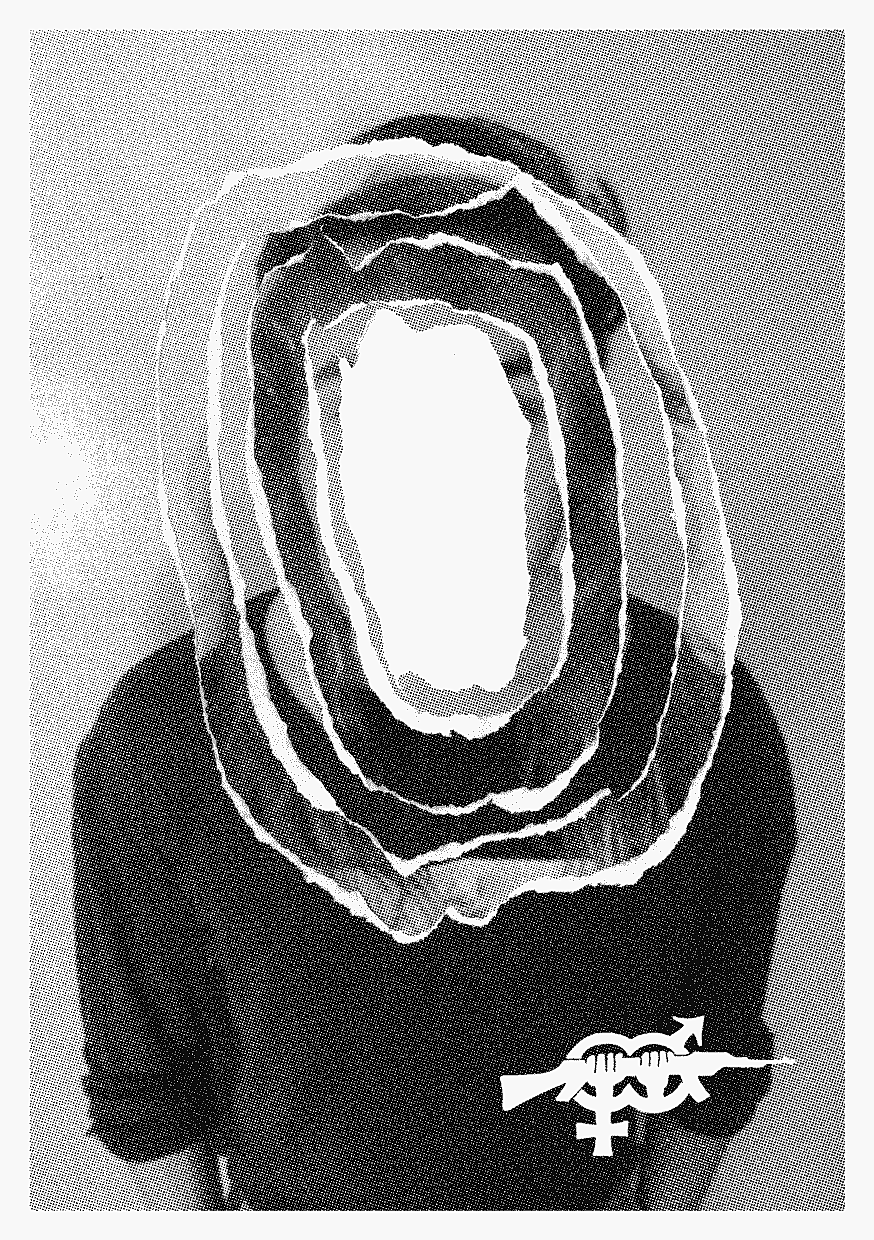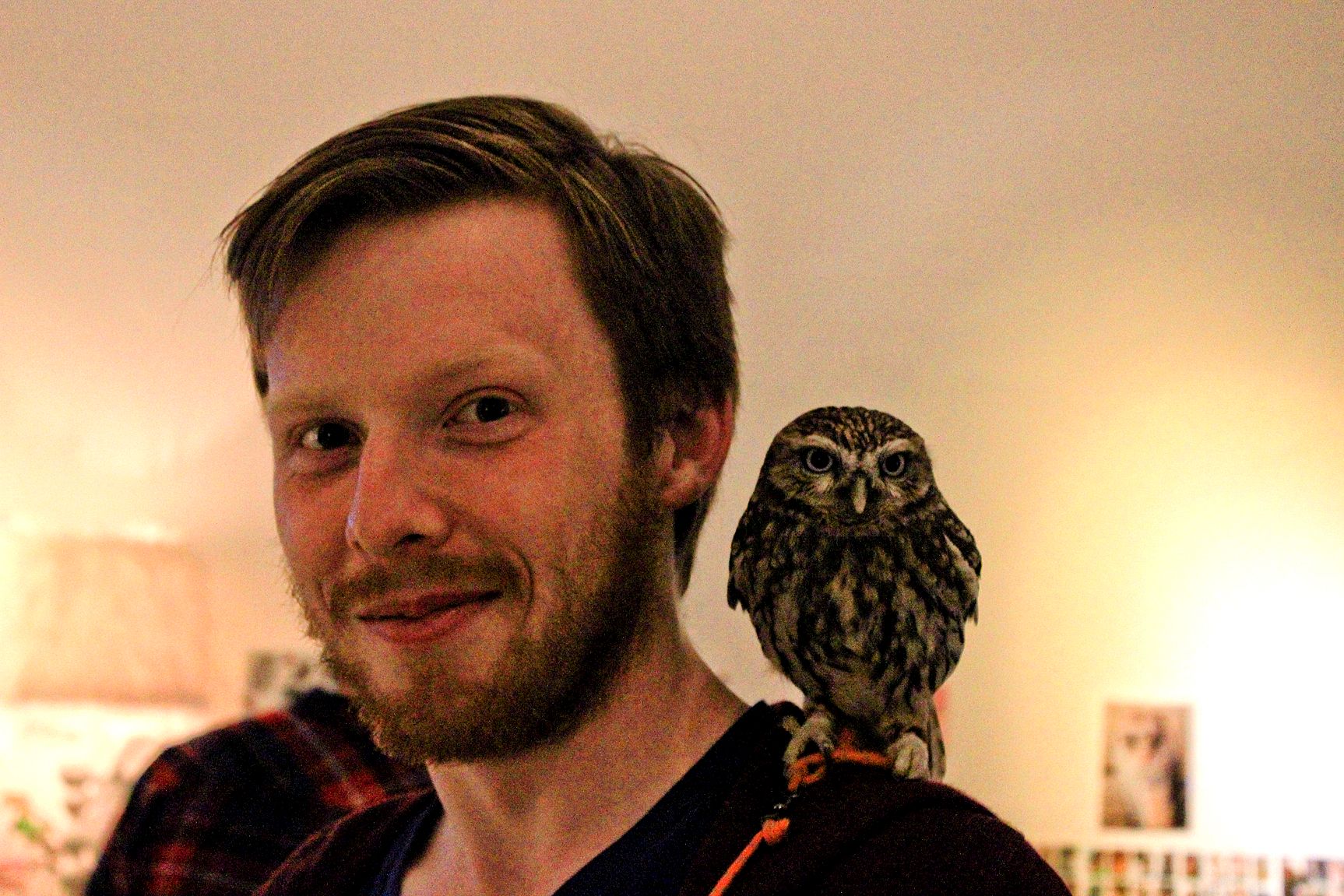Review: The Angry Brigade
If anything in The Angry Brigade can be said to telegraph where its heart lies, it’s the lights. Cut in two, the second half of James Graham’s political thriller (as directed by Samuel Phillips of Wellington company Bright Orange Walls) is full of cool blues, garish greens, reds as red as their stripped-back set-up will permit. Phillips gives the anarchists at the centre of this half an expressive palette because that’s how they see the world. It’s how the world looks with them in it. It looks like something that might be worth living in.
It’s a damn sight better-looking than London in the early 1970s, anyway, with its naked bulbs and shadowed corners. This London, mapped and defined by Scotland Yard’s youngest and brightest, dominates the first half. Led by Smith, an overachieving kid detective played by Patrick Carroll, this task force of ‘young’ officers is given a cavernous basement in Met HQ and asked to locate the Angry Brigade, the aforementioned anarchists at the centre of the second half. The Angry Brigade is driven by ideas; these kids are on the case because their superiors are out of ideas and they’re hoping these wunderkinds will have some instead.
Problem is, the kids don’t understand the mindset of revolution. Smith talks about youth culture like he’s memorised it for an exam, “alternative bookshop” and “European literature” thudding off his tongue. He refers to the Angry Brigade as “our contemporaries” and sounds like a guide at a history museum. His team (played by Comfrey Sanders, Andrew Paterson and Karin McCracken) isn’t much better: uptight, insecure, unwilling to leave their bubble unless they absolutely have to. They’re straight-laced, highly-strung conservatives with the job of understanding their opposites, and the ensemble is hilarious when they’re playing with that contradiction. They push the squad’s stuffiest traits to breaking point, bewildered as they puzzle over the philosophy of Guy Dubord and the anonymous communiques they keep getting.
Their office is washed-out and empty, yellow on white, littered with the books they need sp they can understand people their age. It’s this blank background that lets Graham, Phillips and the rest of the company recontextualise the squad’s defence mechanisms as broad comedy. Their word games and asinine thought exercises are really funny as a result, goofy and oblivious attempts to comprehend why anyone would try to shake up their world. Take a chair, try the hundreds of different ways to sit on it. It’s clear that Graham finds little to respect in their beige, bigoted conservatism.
Their beigeness is only interrupted in short, sharp bursts - shadows brought in by informants and other rodents, lights dimming when an officer dares to drop their stiff upper lip. The Angry Brigade, on the other hand, gets full colour. It’s almost as though the colour releases the cast from the previous half’s restraints: here, they get to blow shit up, smash the floor, break down the walls, squabble and debate and fuck. They get to be hot and loud, expressive, honest.
Carroll plays the leader of the Brigade, John, with an aggressive zeal that’s as alienating as it is alluring. The camera, though, is on middle-class anarchist Anna. Anna’s angry and has something more than the spark of revolution in her, but it’s not quite the flame that’s burning in John or in her boyfriend, Jim. A note here: Paterson plays both Jim and DC Morris, two men who feel outclassed in their respective rooms. Paterson’s sensitive to the differences in their inferiority complexes and gives two performances that are impressive in their nuance, finding enthusiasm in DC Morris and an unapologetic sense of duty in Jim.
Anyway, Anna’s a romantic swearing off romance, an activist reluctant to commit to life as an act of protest. She’s driven and uncertain and increasingly desperate for something more real than ideology. Sanders nails that tension between her anger and her idealism, playing her as perpetually, palpably unsteady. It’s a tighrope walk, and it’s one of the best performances I’ve seen all year.
I want to preface this next point by saying I’m glad there’s no attempt at ideological ‘balance’ here. Graham’s script makes some broad points about how toxic hierarchies thrive in any environment that’ll have them, sinking their sexist, self-preserving hooks into everyone and everything. Smith and his team drop formalities and readily collaborate, but they’re still carrying out the will of the elite (“The Prime Minister is involved. These orders come straight from him”). Meanwhile, the anarchists answer to John and he actively polices the hierarchy, interrupting Anna the moment she starts talking about “innocent people” to mansplain to her about how capitalism works. But where The Angry Brigade finds life and value in the resistance, and in Anna’s resistance in particular, it laughs at Smith. Smith’s part of a comedy and his brand of conservatism is silly. Graham doesn’t need to give the ideology any benefit of the doubt. It doesn’t deserve it.
The stories meet, though, and while Smith and Anna exist in the same space and time, their interactions are on different terms. On the phone, Smith talks to Anna like a hostage negotiator but Anna talks to Smith like they’re in a forbidden romance from Hollywood’s golden age. From her perspective, they’re the outlaw and the lawman, having one last tryst in a darkened restaurant before they’re forced to play out their roles to their inevitable end. Anna’s interpretation is an unguarded expression of longing, subtle and gripping to watch; Smith’s interpretation is a tense watch but a bit silly because he’s Smith, the dork playing detective.
These parts, where the first and second halves overlap and call back to each other, are key to understanding what The Angry Brigade is doing. They draw a line under how Graham and Phillip approach Anna, Smith and the people who fill their lives. Anna’s fears and desires are presented without apology or judgment, Phillips’ direction loosening up to match and reflect her subjectivity. Everything about the second half - its look, its rhythm, its structure - invites us to empathise with her and her views. The Commander offers Smith some tea and it’s hilarious, stereotypically ‘British’; Anna buys a teapot because she “thought it would be nice” and John viciously tears her to shreds for even thinking it would be compatible with the reality of their cause.
When we’re presented with Smith’s fears and desires, and the fears and desires of his fellow officers, there’s a contrast: we’re invited to laugh, or to feel uncomfortable for a second and then laugh. In one scene, WPC Parker breaks down as she talks about a squat-house raid she participated in, shaken by the collective’s loose sexual boundaries and the fact that they were raising children in that environment. As Parker, McCracken owns the moment, tormented and blurting this out because it’s the last thing she can do before she’s forced to confront her blinkered, authoritarian view of the world. We’re this close to understanding her, why her sense of identity is so fragile that the rest of the world needs to share it for her to feel safe.
In response, Smith’s eyes dart back and forth, anxious and looking for a way out. It’s a move out of old-school British comedy, the kind of thing Basil Fawlty might do when confronted by an angry guest. It’s very funny, but it makes the moment a joke. This keeps happening - windows to inner lives are open and then shut with a laugh. The moments rarely land because no-one will let them. Parker’s confession is the closest it gets. It’s difficult, then, to connect with these characters, to understand them as people and buy into their development, because we keep getting asked to laugh at them when they’re being honest with us.
There’s so much to like and admire in The Angry Brigade. Graham’s scripts have a knack for amplifying the parts of the past that echo through our present; Phillips recognises this and runs with it, playing up the ridiculousness of inherently conservative institutions like the Police and the allure of revolution in a society managed by those same institutions. (Though he could maybe ease up on the snatches of London Calling he plays in the transitions.) Carroll, Sanders, Paterson and McCracken set a thrilling pace as an ensemble and manage the conflicting tones with skill and a rich sense of detail.
It is trying to manage conflicting tones, though. Where the second half is emotionally open, the first is emotionally distant; where the second half invites us to understand Anna, the first doesn’t see there being much to understand in Smith. It’s a jarring choice. It weakens our engagement with the squad’s moments of vulnerability, an engagement that’s vital given the direction in ehich Graham takes that first half. More importantly, though, it weakens our connection with Anna’s internal conflict. Anna buys a teapot while Scotland Yard drinks tea; Anna flirts with Smith while Smith negotiates with Anna. The Angry Brigade keeps linking Anna’s idealism to a group of people we can’t connect with, and it means that Phillips and his company have to work harder to make us believe. It means that, sometimes, our belief wavers.
The Angry Brigade is a show cut in two. One half is vibrant and heart-wrenching, packed with ideas, delivered with the intelligence and conviction that Phillips and his company regularly bring to the table. The other half is a very funny and very fun cat-and-mouse game. They’re both great pieces of theatre. Together, though, they cause each other problems.
The Angry Brigade runs at
17 Tory Street from October 15 - October 25
For tickets and more information, go here.

